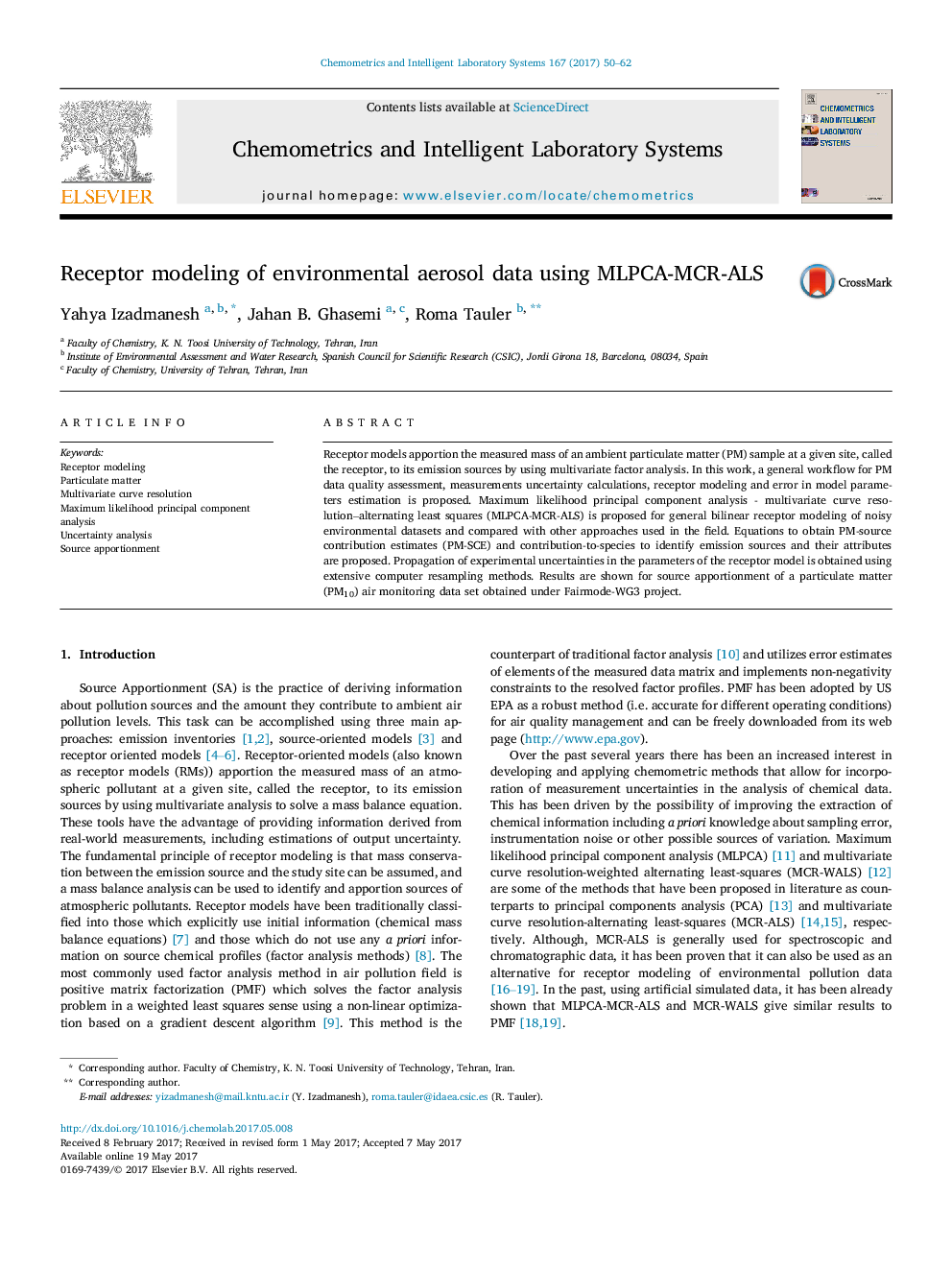| Article ID | Journal | Published Year | Pages | File Type |
|---|---|---|---|---|
| 5132171 | Chemometrics and Intelligent Laboratory Systems | 2017 | 13 Pages |
â¢Receptor modeling of Fiarmode-WG3 dataset was done by MLPCA-MCR-ALS.â¢Comparison with PMF and MCR-WALS confirmed applicability of MLPCA-MCR-ALS.â¢A step-by-step workflow is provided for data quality checks and uncertainty calculation.â¢The terms to help identify and interpret source attributes are introduced.â¢Experimental uncertainties of sources are estimated by a numerical resampling method.
Receptor models apportion the measured mass of an ambient particulate matter (PM) sample at a given site, called the receptor, to its emission sources by using multivariate factor analysis. In this work, a general workflow for PM data quality assessment, measurements uncertainty calculations, receptor modeling and error in model parameters estimation is proposed. Maximum likelihood principal component analysis - multivariate curve resolution-alternating least squares (MLPCA-MCR-ALS) is proposed for general bilinear receptor modeling of noisy environmental datasets and compared with other approaches used in the field. Equations to obtain PM-source contribution estimates (PM-SCE) and contribution-to-species to identify emission sources and their attributes are proposed. Propagation of experimental uncertainties in the parameters of the receptor model is obtained using extensive computer resampling methods. Results are shown for source apportionment of a particulate matter (PM10) air monitoring data set obtained under Fairmode-WG3 project.
